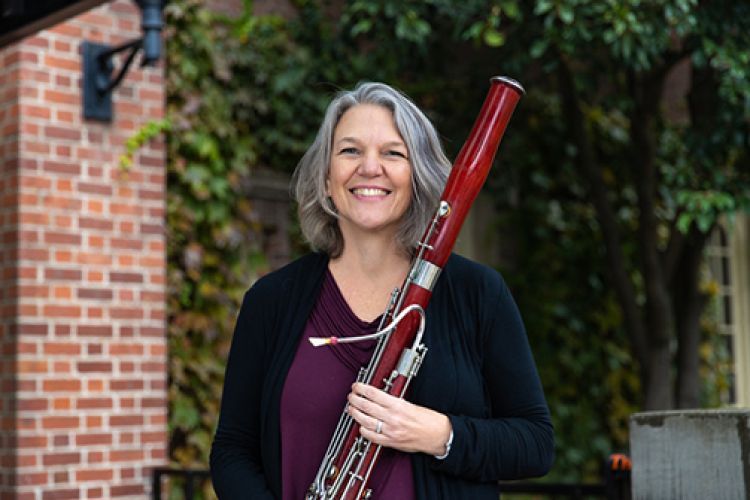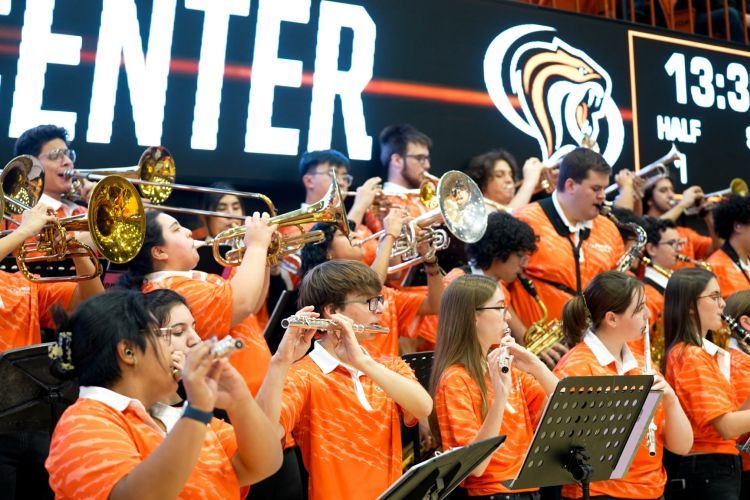Breadcrumb
Reed making part of Pacific’s bassoon culture

Professor Nicolasa Kuster is hosting virtual reed making sessions on the first and third Tuesdays in June and July.
Sifting through the hundreds of event offerings on the University of the Pacific website, we came upon …
Bassoon Reed Making
“Let's make reeds with Professor Nicolasa Kuster! These virtual sessions will take place on the first and third Tuesdays in June and July, and are open to incoming and continuing conservatory students as well as other Pacific students.”
So, why not? Little did we know that auditing this session would be about more than reeds. This was a 90-minute dive into bassoon culture.
“Bassoonists love to talk about reeds, whether we are enthralled by the process of making them or that we hate our lives because the reeds are being problematic,” said Tyler Van Zuiden, who will start his senior year in August.
“Our self-esteem and happiness can be linked to how our reeds are working,” Kuster said.
Kuster is assistant dean of academic affairs, program director of woodwinds and associate professor of bassoon for Pacific’s Conservatory of Music. She has taught at Pacific since 2008 while maintaining a robust performance schedule with symphonies and music festivals. Her usual summer performances, however, are shut down due to the COVID-19 pandemic.
That has left more time for bonding with students.
She was joined by Van Zuiden, senior Tristen Collinsworth and Paul Barron, one of her high school private students, for the reed making—and learning—session.
One thing is abundantly clear: the bassoon is not an instrument that you can just pull out of its case, ready to play. Making reeds is arduous. Bassoonists can buy reeds commercially and through online outlets. However, generic reeds often do not conform to different needs for different musicians. Cost can be a factor, too.
“There are so many individual needs, so generally bassoonists make their own,” Kuster said. “There can be a dramatic difference in sound if reeds are made well.”
Van Zuiden pulled out a sharpening contraption and talked about the intricacy of reed making. He spoke of profiler blades, scrapings and cane.
“It can be a difficult process until you get comfortable with it,” he said. “It can be frustrating because you can make what seems like a perfect reed and then it will only last 15 or 20 playings.”
Kuster and her bassoonists pulled out wooden cases filled with reeds. It is important to have a stash because you never know when one will break or go bad. Musicians often tuck away high-quality reeds to use in performances instead of practices.
Kuster spoke of once having “a magic reed.”
Collinsworth mentioned the passion it takes to be a bassoonist—and of the expense of feeding that passion. A “beginner” bassoon will run in the $8,000 range, but that will take a musician only so far.
“These students are facing a $15,000 expense for the next level of instrument in order to get to where they need to go,” Kuster said.
And the cost for a top-of-the-line bassoon for professional musicians? That can be upwards of $50,000.
“There is a reason why bassoonists don’t drive fancy cars,” Kuster said.
Kuster’s session involved much more than reed making. Collinsworth and Van Zuiden played intricate pieces and received her feedback. Kuster spoke of the Meg Quigley Vivaldi Competition and Bassoon Symposium for young women bassoonists that she helped found. She also pulled up a YouTube clip of 81 bassoonists performing together.
Kuster urged her students to register for a virtual panel discussion with bassoonists of color featuring Lia Uribe, Garrett McQueen, Shawn Jones and Kika Wright.
In addition to Collinsworth and Van Zuiden, the conservatory has several other returning and first-year bassoonists. There are two more Bassoon Reed Making sessions this summer (July 7 and 21).





